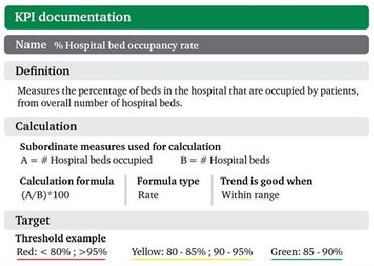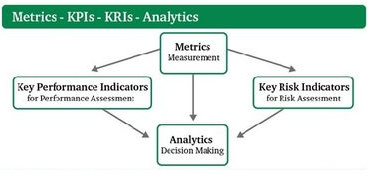Key Performance Indicator (KPI) is a measurable value that demonstrates how effectively a company is achieving key business objectives. Organizations use KPIs to evaluate their success at reaching targets.
A KPI is only as valuable as the action it inspires. Too often, organizations blindly adopt industry-recognized KPIs and then wonder why that KPI doesn’t reflect their own business and fails to affect any positive change. One of the most important, but often overlooked, aspects of KPIs is that they are a form of communication. As such, they abide by the same rules and best-practices as any other form of communication. Succinct, clear and relevant information is much more likely to be absorbed and acted upon.
In terms of developing a strategy for formulating KPIs, your team should start with the basics and understand what your organizational objectives are, how you plan on achieving them, and who can act on this information. This should be an iterative process that involves feedback from analysts, department heads and managers. As this fact finding mission unfolds, you will gain a better understanding of which business processes need to be measured with KPIs and with whom that information should be shared.
How to define a KPI
Defining a KPI can be tricky business. The operative word in KPI is “key” because it every KPI should related to a specific business outcome. KPIs are often confused with business metrics. Although often used in the same spirit, KPIs need to be defined according to critical business objectives. Follow these steps when defining a KPI:
To be useful, KPIs need to be monitored and reported on; if they change in real-time, they should be monitored in real-time. Dashboards are the perfect tool for your KPI reports as they can be used to visually depict the performance of an enterprise, a specific department, or a key business operation.
‘As noted above, KPI examples can be used to provide guidance, but you need to consider the specific goals and processes associated with your organization before adopting a template. These examples illustrate KPIs for several different departments.Measuring and monitoring business performance is critical, but focusing on the wrong key performance indicators can be detrimental. So can be poorly structured KPIs, or KPIs that are too difficult, costly to obtain, or to monitor on a regular basis.So what makes business performance indicators “key” and how should a business owner, executive or manager select them? There are six factors that separate effective, value creating KPIs from detrimental, value diminishing KPIs. The right KPIs for your business should follow these








